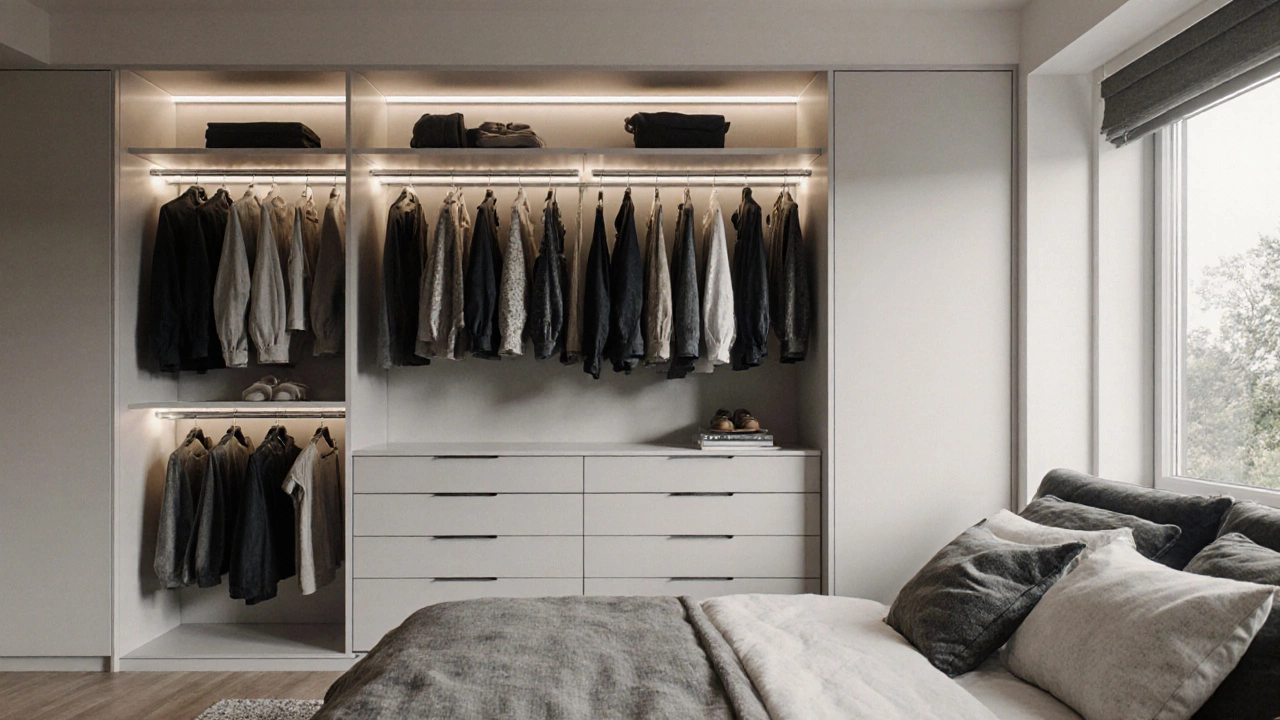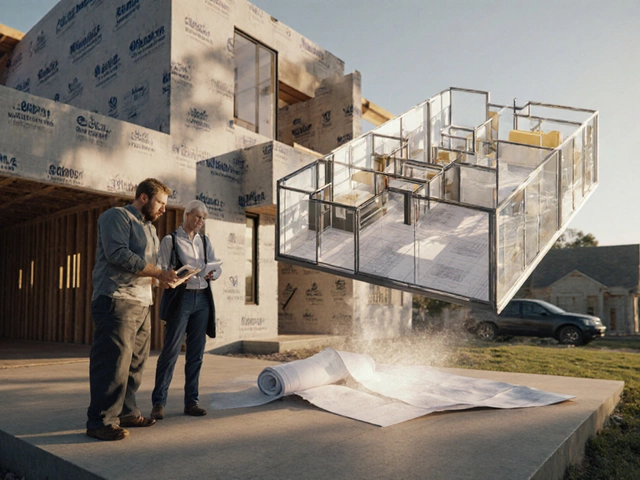Wardrobe vs Closet: Key Differences and What Works Best for Your Home
When you're trying to organize clothes in your bedroom, you're probably weighing a wardrobe, a freestanding storage unit for clothes, often with doors and shelves. Also known as armoire, it offers flexibility and portability. On the other hand, a closet, a built-in space within a wall designed specifically for storing clothes is part of the house structure—permanent, often larger, and usually includes lighting and rods. Both solve the same problem: where to put your clothes. But they’re not the same, and choosing the wrong one can waste space, money, or both.
Most people think a closet is always better because it’s built-in, but that’s not true. A wardrobe is ideal if you rent, live in an older home without built-ins, or just want to move your storage when you relocate. It doesn’t require construction, permits, or drywall damage. You can buy one for under £200 and roll it into place. A closet, a permanent structural feature built into a room costs more—think £1,500 to £5,000+ if you’re converting a nook or adding one during a renovation. But if you own your home and plan to stay long-term, a well-designed closet adds real resale value. It’s one of the upgrades buyers notice, especially if it’s got good lighting, adjustable shelves, and pull-out drawers.
Size matters too. A standard wardrobe, a freestanding clothing storage unit is usually 2 to 3 feet wide and 6 to 7 feet tall. That’s enough for a small bedroom or a guest room. A typical closet, a built-in storage space integrated into a home’s architecture starts at 4 feet wide and can go up to 10 feet or more. Walk-in closets? Those are luxury features, but they need at least 5 feet of depth to be useful. If your room is under 10x10 feet, a big closet might eat up too much floor space. A wardrobe fits neatly in a corner without stealing room from your bed or dresser.
And then there’s airflow. Closets are often sealed off from the rest of the room, which can trap moisture and lead to mildew—especially if you live in a damp climate like parts of the UK. Wardrobes, with their open backs or gaps around the edges, let air move more freely. That’s why people who store wool coats or vintage fabrics often prefer wardrobes. You can also add a dehumidifier pack inside a wardrobe easily. In a closet? You’d need to install ventilation, which means cutting into walls.
What about customization? A built-in closet can be tailored to your exact needs: shoe racks, tie drawers, jewelry trays, even a full-length mirror on the door. But that level of detail costs time and money. A wardrobe gives you some of that flexibility too—many modern ones come with modular shelves, hanging rods at different heights, and pull-out bins. You can upgrade yours over time without calling a contractor.
If you’re restoring an old house, a wardrobe might even be more authentic. Many British homes from the 1800s used armoires before built-in closets became common. If you’re doing a period renovation, a wooden wardrobe fits the style better than a bland white closet. And if you’re upgrading your furniture, a wardrobe can double as a decorative piece—especially if it’s painted, mirrored, or has brass handles.
So which should you pick? If you’re renting, on a budget, or need something you can take with you, go for a wardrobe. If you own your home, have the space, and want to boost your property’s value, invest in a closet. Neither is right or wrong—it’s about matching the solution to your situation. Below, you’ll find real-life examples from homeowners who’ve made both choices, along with tips on how to make either option work better for your space.
What Is the American Name for Wardrobe?
In the U.S., the word for a clothing storage unit is 'closet'-not wardrobe. Learn why the terms differ, how homes are built differently, and what to call each type of storage when shopping or moving.
full article




